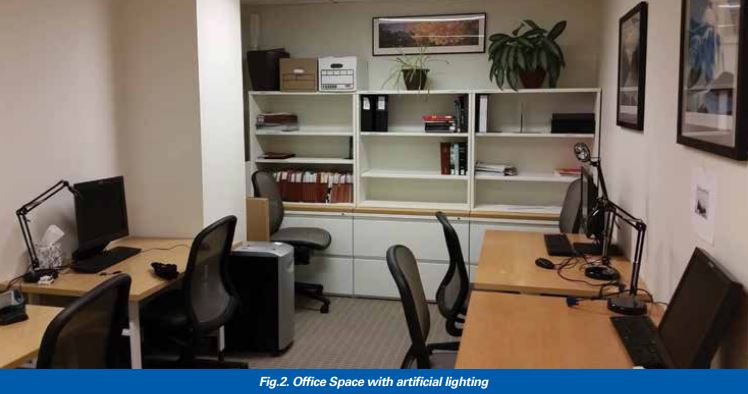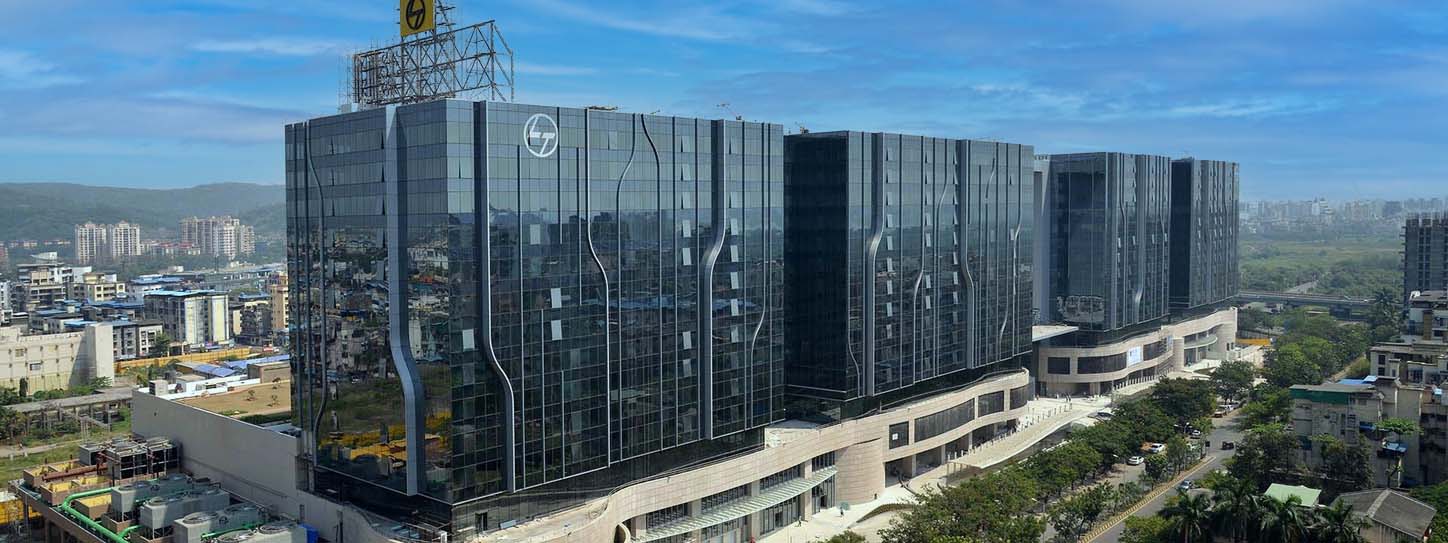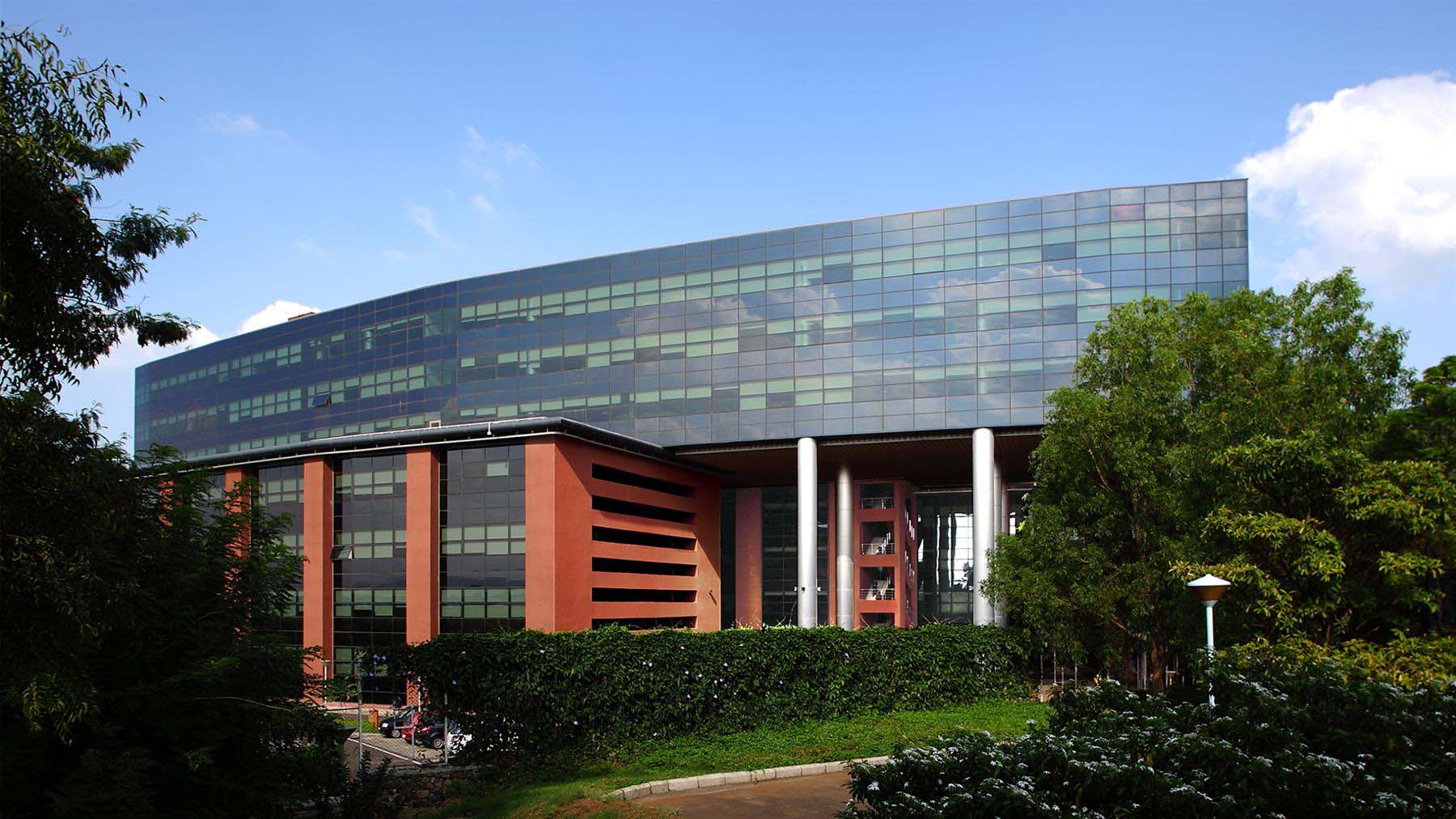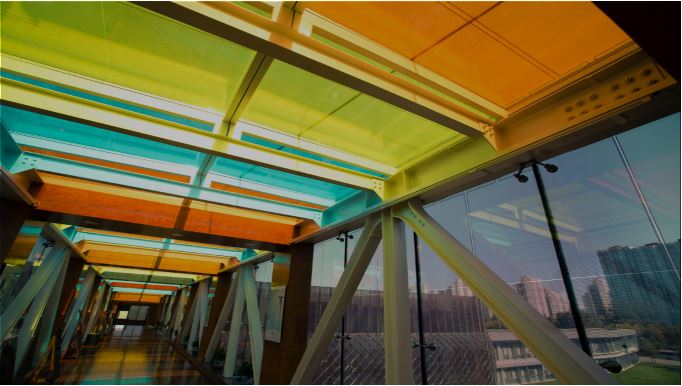IFJ Tech+Design – Glass Facade
“Technology is a wonderful thing”. Discuss this in the case of glass facade in general.
When used in the context of architectural glass, the word “technology” assumes new and broader dimensions. Being a building product, and one of the most bespoke at that, glass is required to perform multi role functions to protect, preserve, shield and beautify. Today, glass is a ubiquitous and almost indispensable material for building facades, and with time technological advances in manufacturing systems, coatings, interlayers and processing capabilities have ensured that the building not only looks appealing but also enhances occupant comfort and reduces carbon footprint.
There are several reasons why glass scores as the predominant facade material:
1. Composed entirely of natural raw materials, glass is both cost effective and exceptionally durable. It does not change appearance over time and does not deteriorate in structure, performance or composition due to environmental effects.
2. New advances in coatings have allowed lower heat gain values while maintaining a high light transmission, both characteristics vital for enhancing occupant comfort and productivity.
3. Technological improvements in glass processing have resulted in these high performance coatings become the industry-standard and larger assemblies are now possible.
4. Glass being almost totally recyclable is also a preferred choice for green building facades and does not contribute to global non decomposing waste.
5. Time and labour required to install a glass facade are vastly lower compared to building conventional stone or brick painted walls. With unitised systems and its installation know-how quickly gaining momentum, glass facades are now assembled in aluminum fabrication factories and installed as a pre-fabricated skin with extremely quick throughput times and very high quality levels.
What are the qualities of glass required for façade use?
Any glass and the facade in entirety, irrespective of the building type, intended use and style, are required to perform four key functions:
1. Aesthetics: From an architectural perspective, facades envelop the building structure and is its most visible element. Glass today comes in an almost unlimited colour palette with neutral, grey, blue, green and bronze being the preferred tones. Coatings further impart varying reflectance levels both externally and internally. This combination of glass tint and coating helps architects define the light transmission, reflectance, gloss levels and the overall building appearance.
2. Performance: With buildings being the maximum consumers of energy worldwide, it is imperative that the carbon footprint is kept to its minimum possible. Depending on the climatic zone, facades should be designed to keep heat out or preserve heat inside. In the Indian context, with our tropical climate, glass facades should have the lowest possible solar heat gain coefficient (less than 0.30) and low U values (1.50 to 2.00 W/m2K) to keep the HVAC costs down.
3. Safety: A facade is intended to shield the building from environmental forces such as wind, heat, water and dust. Safety naturally assumes top priority and the façade should be designed to withstand all these forces, have a safe-breakage pattern to protect occupants in the event of breakage and also resist the spread of fire. Contrary to the recent media reports, glass is in fact one of the safest materials to use from the perspective of fire safety since it is non-combustible and is actually easier to break compared to a brick or stone wall. It is also important to understand that glass is just one element of the total building fire-safety strategy and all components of this strategy like smoke seals, fire alarms and sprinklers, compartmentation and refuge floors amongst others should optimally work together for best results.
4. Acoustics: Our cities are not getting less noisy and it is the responsibility of the facade primarily to curtail undesirable sound transmission. Recent advances in interlayer technologies allow STC (Sound Transmission Class) values of as high as 45 dB in a triplelayered glass combination. An important consideration here is to measure the STC value of the facade in totality (including the framing system) and not glass alone, as is a common incorrect practice, since the sound transmission will be determined by the weakest element in the chain. Most architects and developers however prefer using a 24 millimetre insulated glass combination to balance cost and performance, which provides STC of 35 dB.
Could you comment on the evolution of the glass façade industry in India and the world?
Use of glass in facades has seen an exponential rise across the globe and more so in India due to easier availability, proliferation of technological know how in processing and installation and the enhanced performance capabilities highlighted above. Architects today can combine glass with several other façade materials such as aluminum sheets, aluminum composite panels, stone, clay tiles and even fabrics. While glass plays the important and indispensable role of allowing light inside the building, the other elements enhance the visual appeal and assist innovation and uniqueness.
If we look at the architectural evolution over the last ten or fifteen years, almost all building developments utilise a very high proportion of glass in their facades compared to the preceding era. Since glass is the only practical building material offering transparency and
What are some of the biggest technological and design advancements in the glass façade industry during the last decade?
One of the most impactful advancements in glass facades have been in the area of glass coatings. While the older technology was limited to cutting solar heat gain by making the glass dark and by compromising light transmission, the introduction of silver as a coating material has tremendously improved the spectral selectivity (ratio of light transmission to solar-heat gain) of glass assemblies. The latest coatings, deposited by MSVD (Magnetron Sputtered Vapour Deposition) cathodes can place several layers of metals and metallic oxides to help increase the spectral selectivity.
A developing trend also utilises shading devices, either static and more recently adaptive, to cut solar glare and aid in reducing heat transmission. With adaptive facades, architects are now equipped with an innovative product that can not only make a stunning architectural statement but also cut down massively on solar heat gain and glare during periods of intense sun rays impact and leave the interiors with abundant light during morning and late evening hours. Consider the Al-Bahr Towers in Abu Dhabi, one of the world’s hottest cities during summer months. Designed by AHR (formerly Aedas UK), the double-skin façade utilises a high performance silver low-E coated glass as the inner layer and this is further encapsulated with polytetrafluoroethylene (PTFE) based adaptive façade that automatically open or close depending on the intensity of sunlight. Adaptive facades can also be controlled manually or through pre-set timers that dictate its movement at different times of the day.
An interesting variation in adaptive facades is now possible through photochromic or electrochromic glass coatings. These coatings do not need external shading devices but can be made darker or lighter depending on the incident light luminosity or through electronic control. Although currently cost prohibitive these coatings have enormous potential to disrupt facade design and implementation in the near future.
Design and technology are linked closely. How has this worked in your company?
At FG Glass our focus has always been to stay updated with current design trends and upgrade our processing infrastructure in anticipation of these changes. For instance, in 2008 we installed India’s first and till date only top-and-bottom turbo-charged convection furnace which helped us promote and quickly penetrate the high-performance silver low-E coated glass market. FG Glass has also pioneered revolutionary glass products in India such as Sefar® fabric laminated glass, metal-mesh encapsulated glass, electronically switchable glass, GroGlass® anti-reflective glass with reflectance levels less than one percent, Vanveca® range of colour laminated glass, SchottTM borosilicate non-wired two hour fire-rated glass and dichroic glass to name a few. These products require superior processing capabilities, dedicated production training, exhaustive product testing and intensive marketing efforts to create visibility for developers, architects and consultants.
With continuing modernisation in infrastructure and introduction of relevant and unique glass products, FG Glass continues to cement its position as one of India’s largest and innovative architectural glass companies.
A little bit about current market trends. How has usage of glass for façade changed in India, in the recent past?
With its versatile application possibilities and unmatched capabilities, glass will continue to be the de-facto facade product of choice for architects and designers. The float glass industry has been growing at a rate of nearly 20 percent every year and this demand will sustain over the coming years for multiple reasons. India is a growing construction market with colossal potential. The unceasing population explosion in urban areas and the resulting scarcity in space will inevitably force vertical growth creating taller buildings. The Smart City concept initiated by the central government is also an encouraging trend for glass facades owing to its speed of installation, time being a critical deciding factor for the choice of product. Capacities for processed glass are surging with many medium to small enterprises setting up entry level facilities and this will help cater to the growth in demand for glass.
While the growth in glass dominated facades was previously fuelled by commercial spaces and hotels, we are now witnessing almost all residential developments use tall glass lites for windows and even structural glazing. In fact in several high rise towers in Mumbai, we have supplied floor to ceiling laminated and insulated glass panels to control sound and heat. Consumer demands and preferences will only swing upwards and developers will need to accommodate these demands by using better building products.
My Profile
Tariq Kachwala is the Director of FG Glass, one of India’s leading glass processing companies with a project footprint throughout India and over 20 countries worldwide. He holds an MS MBA degree from New York University and spearheads operations and new business development in his organization.
One of the prominent figures throughout the glazing fraternity, Tariq is the Hon. General Secretary of the Federation of Safety Glass (FOSG) has collaborated on various industry initiatives such as establishing new quality standards, inventory management and cost analysis and control. He also consults architects, façade specialists and developers on glass functionalities in modern facades and more recently, fire rated glass and related safety guidelines.

You might also like
Feb 21, 2022 by TARIQ KACHWALA
Feb 21, 2022 by TARIQ KACHWALA
Feb 23, 2022 by TARIQ KACHWALA









